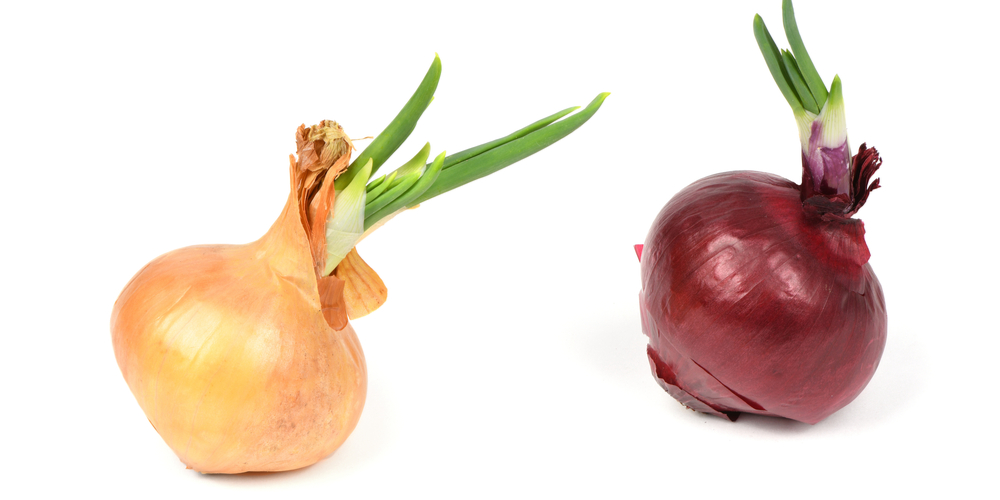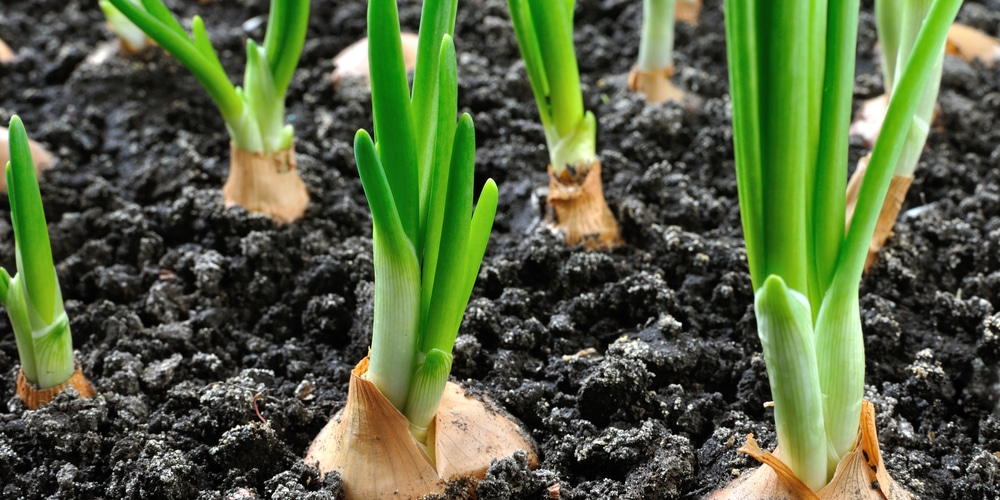Onions are one of the classic staples of any home garden. They are relatively easy to grow, and they have a long shelf life, making them a great addition to any pantry. Having a good yield mostly depends on two things: planting a suitable onion variety for your climate and getting the timing right.
Utah’s climate is well suited for onion cultivation. The Beehive State has both the right amount of sunlight and water for onions to thrive. Local gardeners would recommend that you plant between late March and early April.
As soon as you’ve noticed that you can work the soil without it being too wet or frozen, you can go ahead and plant your onions.
Onion Varieties That Thrive in Utah

Utah is known for its diverse landscape, from the snow-capped mountains to the lush valleys. And while the state is best known for its potatoes, Utah’s climate and soil also make it ideal for growing onions.
While this region’s climate may be relatively dry and cold in winter and extremely hot in the summer, finding an onion variety that can withstand extreme temperatures is crucial.
Some good varieties to plant in Utah include:
Utah Yellow Sweet Spanish
The Utah Yellow Sweet Spanish onion is a popular variety that thrives in the state of Utah. This type of onion is characterized by its large, yellow bulbs and sweet flavor. It is a versatile variety that can be used in many different dishes. It is often used raw in salads or topping on burgers and sandwiches.
It can also be cooked in various ways, making it a popular choice for many home cooks.
Growing this variety is relatively easy, as it is tolerant to both heat and cold. It matures in about 100 days, making it an excellent choice for those who want to harvest their onions quickly. This variety needs full sun and well-drained soil to thrive.
Bermuda Onion
Bermuda onions are a type of sweet onion that is characterized by their small, round shape and light brown skin. This variety is a popular choice for onion rings, as it has a higher sugar content than other types of onions.
These onions also have a crispy texture when raw, making them perfect for salads. In Utah, Bermuda onions thrive in the warm summer months.
They are typically harvested between July and August and can be stored for six months. Sunlight and water are crucial for this variety, as they need full sun and well-drained soil to grow.
Walla Walla Onion
Walla Walla onions are a type of sweet onion that gets its name from the small town in Washington where it was originally grown. These onions are large and globe-shaped, with light brown skin and white flesh. They have a mild, sweet flavor that makes them ideal for eating raw or using in salads.
Compared to other sweet onion varieties, Walla Wallas is less pungent and have a thinner skin. They are also one of the quickest-maturing onions, taking about 85 days to reach maturity. These onions need full sun and well-drained soil to grow.
Egyptian Walking Onion
The Egyptian walking onion is a type of allium that gets its name from its tendency to “walk” or spread across the ground. This variety is characterized by its small, round bulbs and long, thin stalks. It has a mild flavor that makes it ideal for eating raw in salads or as a garnish.
This onion variety is relatively easy to grow, as it is tolerant to both heat and cold. It matures in about 90 days and needs full sun and well-drained soil to grow.
While many different types of onions can be grown in Utah, the above varieties are some of the best choices for local gardeners. With the proper care and attention, you can have a bountiful harvest of onions to enjoy straight from your backyard.
Do You Plant Utah Onions in Fall or Spring?
One thing to keep in mind is that onions are a root crop. This means that they don’t do well when transplanted. For this reason, it is best to plant your onions from seeds or sets during the spring.
Planting onions earlier in the fall and transplanting them when spring comes may result in smaller onions.
Wait for the last frost, which typically occurs in late April or early May. Once the frost has passed, and once you can work the soil without it being too wet or frozen, you can go ahead and plant your onions.
Tips When Planting Onions in Utah
When planting onions in Utah, there are a few key tips that you should keep in mind. For one, the soil in this region tends to be sandy and somewhat acidic, which means it may not provide optimal growing conditions for these plants.
To get the best results, you will need to amend your soil with a generous amount of compost or fertilizer in order to provide much-needed nutrients and minerals.
Additionally, you should not plant your onions too densely, as they do best when they have plenty of space to grow.
Finally, be sure to water them regularly and harvest them at the right time to get the most out of your harvest.
When to plant onions in Utah: Final Thoughts
Planting onions in Utah can be a bit tricky, as specific factors must be considered when deciding when to plant and how to care for them.
For example, onions are frost-tolerant plants that do best in mild temperatures ranging from 40-80 degrees Fahrenheit, making early spring and late summer optimal planting times.
When it comes to soil preparation, onion beds should be finely tilled and then amended with a 2-4 inch layer of compost or well-rotted manure. Onions also need regular watering and may even require the occasional application of fertilizer if they do not do well with your soil conditions.
In general, the key factor to success when planting onions in Utah is to plan ahead and remain attentive throughout the growing season.
Related Article: Utah Planting Zone

